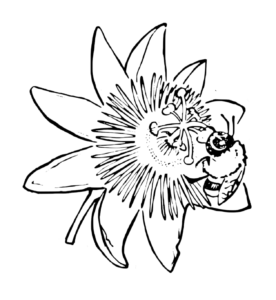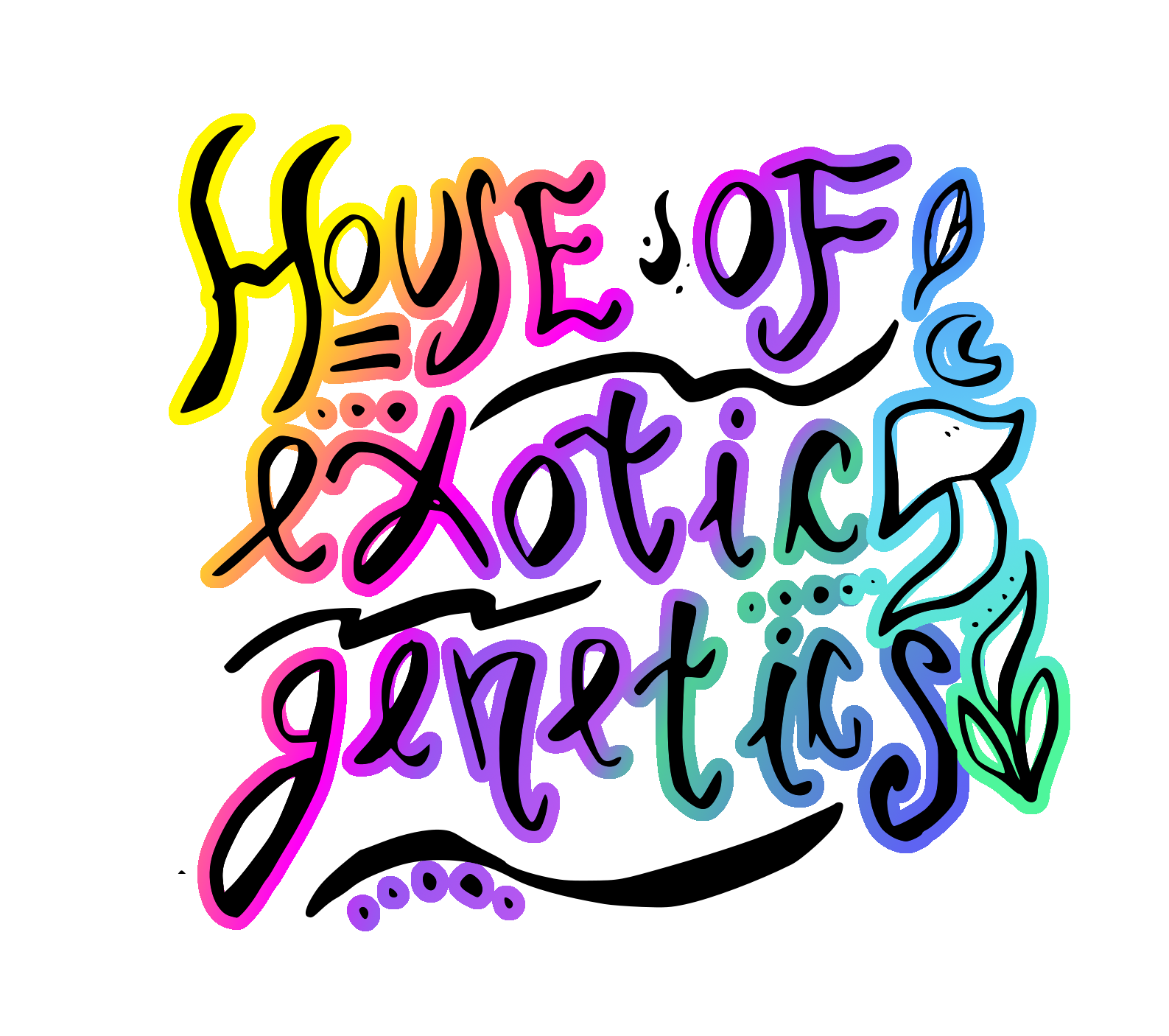
Lucid dreams and dream plants
Vivid dreams and lucid dreams are powerful tools for understanding ourselves. Every night we dream, even when is hard or impossible to remember.
- The vivid dreams are more clear and colorful, they can be interpreted much easier and can give us some hidden knowledge coming from the subconscious.
- In the lucid dream we are conscious that we are dreaming meanwhile is happening, which is a great experience that seems to open new worlds.
Here is the list of the plants that improve the chances to have vivid and lucid dreams according to their own ancient traditional use:
- Calea zacatechichi (Dream Herb)
- Silene capensis (African dream root)
- Entada rheedhii (African dream herb)
- Nymphea caerulae (Blue lotus)
- Gingko biloba
- Passiflora incarnata (Passionflower)

1. Calea zacatechichi
“The Dream Herb” or “Leaf of God“

Calea zacatechichi is a small plant native of Mexico, used by the indigenous as Chontal Indians, in order to obtain divinatory messages and visions during their sleep(1). Has a strong dream-inducing power, so must be taken seriously and consciously.
Property
- Is one of the most famous and powerful oneirogenic herb ( that literally means “dreams creation“);
- the dreams become more clear, colorful and vivid immediately or after few days of use;
- the dream recall is improved;
- Promote a good sleep;
- Increase the chances of lucid dream state.
How to consume
The dried leaves are usually smoked, vaporized or used in infusion as a tea.
The taste of the herbal tea is very bitter if drunk and often is consumed in association with honey and other sweet ingredient for be more pleasant.
Legality
In Europe this plant is legal, except for Poland
2. Silene capensis
“African Dream-Root”

Synonymous of Silene undulata, also known as “African dream-root” is native of the west coast of South Africa. Is considered a sacred plant from the Xhosa tribe (Bantu group), used in their tradition in association with other roots, herb,s and creepers to make the”ubulawu preparation“(2)
Property
- With c. zacatechichi, is one of the most famous oneirogenic plant
- intensity the dreams
- improve the dream recall.
- Very useful for reaching a lucid dream state.
- The effect could need a few days for being sensed.
Traditionally other roots and plants were added to the preparation then drunk following a precise ritual. One of the purposes of the ritual use was to find a connection (through the dreams) with the ancestral spirits and receive knowledge.
How to consume
The part commonly used are the roots, dried and powdered, mixed vigorously with cold water in order to obtain a foam.
The traditional “ubulawu” and the purification ritual
The term ubulawu refers mostly to the roots of a variety of herbs and creepers, and sometimes the stems or bark of certain plants (Hirst 1990) that are ground and made into a cold water infusion that is churned with a forked stick to produce foam. This foam production is typical of ubulawu preparations. Ubulawu species are classified by Xhosa diviners according to the locality in which they grow, that is, ubulawu of the river, ubulawu of the forest etc (Hirst 1990).
Ubulawu preparations, used in the initiation of Southern Bantu diviners, are typically drunk as an infusion until the initiate’s stomach is full and he or she is ready to vomit. Vomiting is then induced. The vomiting of this compound is referred to as ukugabha (Xhosa) (Lamla, 1975). The foam from the preparation is used to wash the body, normally late in the evening (Lamla 1975). Both vomiting and washing with the foam are used “to remove ritual impurity” (Hirst 2005). Though vomiting is reported as removing ritual impurity, the mechanism of vomiting has a physiological affect on the dreaming process (…)Jean-Francois Sobiecki B.Sc. Hons. EthnoBot (2012) “Psychoactive Ubulawu Spiritual Medicines and Healing Dynamics in the Initiation Process of Southern Bantu Diviners“
3. Entada rheedii
“African Dream Herb” or “Snuff Box Sea Bean”
Entada rheedii is a perennial climbing vine that widely grow in many countries close the Indian Ocean: from South Africa to India, Australia and many regions of Asia.
Due to this vast diffusion, many cultures integrated Entada Rheedii in their traditional medicine. The plant products seed pod long up to 1.5 meters, each pod contains dozen of large, woody seeds(3).
Property
- As C. zacatechichi and S. capensis, just describe above, Entara Rheedii is another powerful oneirogenic plant
- intensifying the dreams
- make dreams more clear
- Increase the chance of lucid dream state
How to consume
The part commonly used to enhance the quality of the dreams is the white “meat” of the woody seed. This can be directly consumed or chopped, dried and mix with other herbs.
Depending on their purpose, traditional preparations of E. rheedii vary widely.When used to induce lucid dreams and communication with the spirit world, the inner meat of the seed is either consumed directly, or chopped, dried, mixed with other herbs like tobacco, and smoked just before bedtime(4).
Virapongse 2006
(from http://entheology.com/plants/entada-rheedii-african-dream-herb/)
4. Nymphea caerulae
“Blue Lotus” or “Blue Water Lily”

Nymphaea caerulea, the Blue Lotus or Blue Water Lily, can be found in several regions of Africa, especially the areas close to the Nilo river. In Egypt, the Blue Lotus is a sacred plant. Traditionally, the flower was eaten raw or into a decoction as a tranquilizer, promoting good and well-rest sleep.
Property
- Is not a dream-inducing plant, his use in the lucid dream experience is linked with his sedative property, which promotes deep, restful sleep.
Other benefits include anti-oxidant activity and aphrodisiac effect. These effect are probably related to the large presence of different alkaloids.
Nymphaea caerulea contains apomorphine, a dopamine agonist, as well as nuciferine, nupharine, and nupharidine. The flowers have also yielded a variety of alkaloids, including kaempferol, which has MAOI properties(5)
Voogelbreinder 2009, 247
Apomorphine has been described as a psychoactive alkaloid and is a non-selective dopamine agonist primarily used to treat Parkinson’s disease as it stimulates dopamine receptors and improves motor function. Nuciferine is an alkaloid associated with dopamine receptor blockade(6).
Justin L. Poklis et al, 2017
How to consume
Blue lotus is available as dried flowers, extract or tincture.
Legality
In Europe is legal except in Poland, Russia, and Latvia ( since April 2009)
5. Gingko biloba

Gingko biloba is an ancient plant (150 million y) with a lot of good effects on the brain and mind-focus.
Is not suggested with sleeping or dream-creation purpose, but to help the memory during the night, increasing the Dream recall (remember the dreams)
6. Passiflora incarnata
“Passionflower” or “Maypop”

Passiflora incarnata, or Passion-flower, is a perennial vine with white-purple tinged flowers, native to the South-west of the United States. This plant was traditionally used as a sedative, anxiolytic, and for the treatment of insomnia in many countries such as Brasil, Iraq, Turkey, and North America.
Passionflower contains several alkaloids like apigenin, possibly causing anxiolytic-effects without affect memory or motor skills.
(fragoso at al. 2007)
Passionflower enhances sleep quality and reduces insomnia.
Is possible to make a tea with fresh or dried Passion-flower
Reference
- J. L. Dı́az, “Ethnopharmacology and taxonomy of Mexican psychodysleptic plants,” Journal of Psychedelic Drugs, vol. 11, no. 1-2, pp. 71–101, 1979.
- Jean-Francois Sobiecki B.Sc. Hons. EthnoBot (2012) “Psychoactive Ubulawu Spiritual Medicines and Healing Dynamics in the Initiation Process of Southern Bantu Diviners“, Journal of Psychoactive Drugs, 44:3, 216-223, DOI: 10.1080/02791072.2012.703101
- M. M. Okba, F. M. Soliman, K. S El Debb, M. F. Yousif “Botanical study, DNA fingerprinting, nutritional values and certain proximates of Entada rheedii Spreng” International Journal of Pharmacy and Pharmaceutical Sciences, vol 5, suppl 3, 2013
- Virapongse, A. 2006. Ethnomedicine and Materia Medica Used by Kui Traditional Healers in Northeast Thailand. Khon Kaen University
- Voogelbreinder, Snu, Garden of Eden: The Shamanic Use of Psychoactive Flora and Fauna, and the Study of Consciousness. Snu Voogelbreinder, 2009.
- Justin L. Poklis, B.S., Haley A. Mulder, B.S., Matthew S. Halquist, Carl E. Wolf, Alphonse Poklis, and Michelle R. Peace “The Blue Lotus Flower (Nymphea caerulea) Resin Used in a New Type of Electronic Cigarette, the Re-Buildable Dripping Atomizer” JOURNAL OF PSYCHOACTIVE DRUGS 2017, VOL. 49, NO. 3, 175–181
Sitography:
- http://entheology.com/plants/entada-rheedii-african-dream-herb/
- http://entheology.com/plants/nymphaea-caerulea-blue-lily-blue-lotus/

One response to “The best herbs for VIVID and LUCID DREAMS”
[…] The best herbs for VIVID and LUCID DREAMS […]